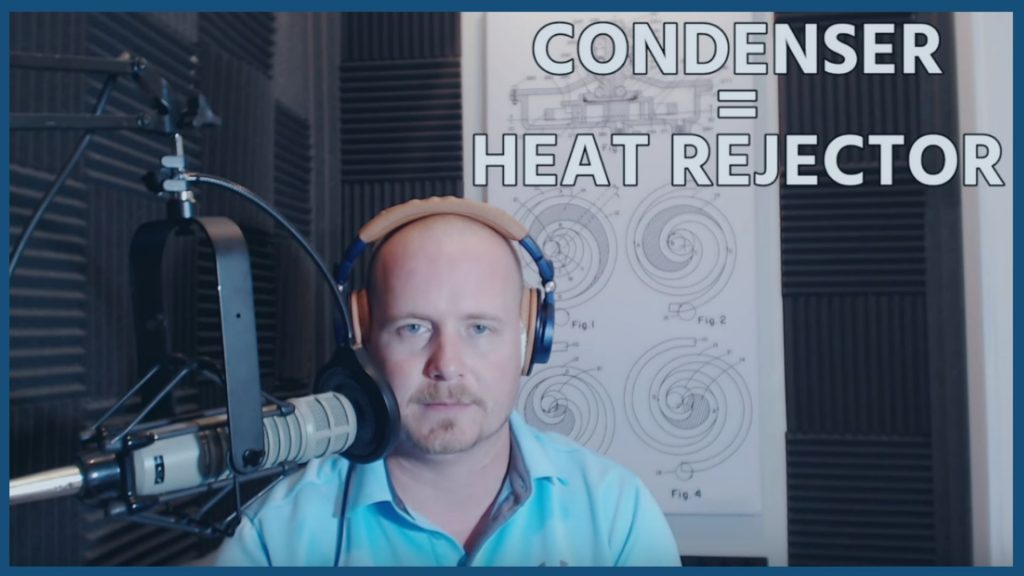HVAC/R Condenser Basics
July 26, 2019


A condenser rejects heat from the refrigerant, making it the opposite of the evaporator. The condenser does three different things in three phases. First, the condenser desuperheats the refrigerant, bringing it down to the condensing temperature (where it can change state). Then, the middle of the condenser is where the refrigerant actually turns from a vapor to a liquid. The last few rows of the condenser are where subcooling occurs, which is when the liquid refrigerant’s temperature drops below the saturation (condensing) temperature.
To accomplish all three of those functions, the condenser rejects its heat to another substance, typically air. (However, there are some systems that reject heat to liquids like water and glycol via heat exchangers.) Regardless of where the rejected heat is going, the main goal is to get the heat out of the refrigerant and to something else.
Whatever that “something else” is, it must have a lower temperature than the refrigerant. Otherwise, heat transfer can’t occur because heat moves from areas with higher temperatures to lower temperatures. That “something else” must also have a temperature below the condensing temperature.
Many condensers are piped so that the refrigerant enters the condenser from the top and makes its way down (subcooling at the bottom).
Comments
To leave a comment, you need to log in.
Log In